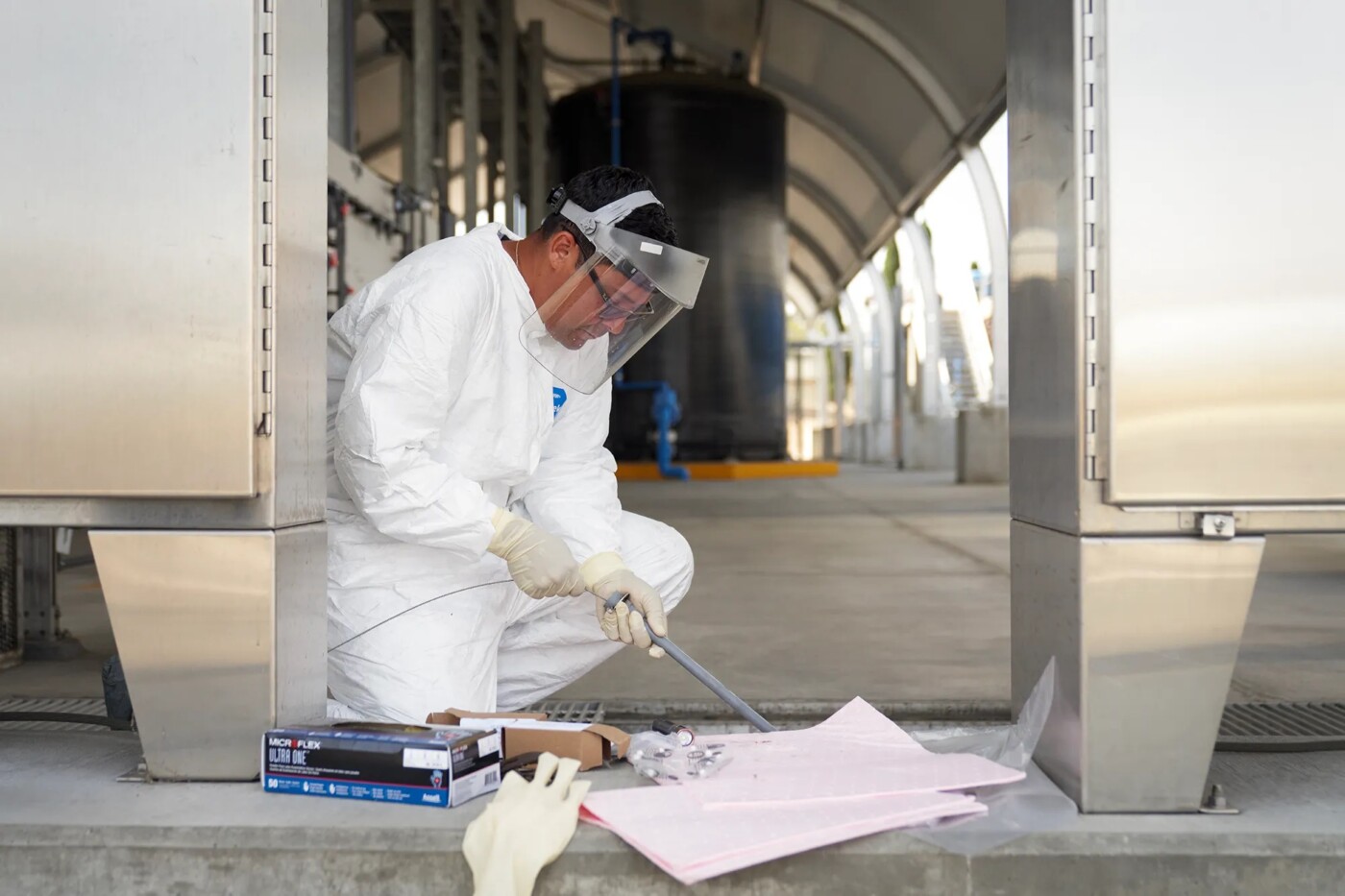In a milestone for creating a major new source of drinking water, California has approved its first standards for turning sewage into potable water supplies delivered to homes and businesses.
The State Water Resources Control Board, In a unanimous vote today, outlined for the first time how water suppliers can treat recycled water and send it directly to taps. Currently recycled water is mixed into aquifers or used for irrigation and other non-drinking purposes.
The new rules — which have been more than a decade in the making and were mandated by a state law — outline a slew of requirements aimed at ensuring that germs and chemicals are scrubbed from treated sewage.
Often dubbed “toilet-to-tap,” the process is actually much more extensive and complex, requiring multiple treatment steps overseen by 63 pages of detailed rules. The new rules also call for extensive monitoring to ensure the treatment is working.
The sewage will be bubbled with ozone, chewed by bacteria, filtered through activated carbon, pushed at high pressures through reverse osmosis membranes multiple times, cleansed with an oxidizer like hydrogen peroxide and beamed with high-intensity UV light. Valuable minerals, such as calcium, that were filtered out will be restored. And then, finally, the wastewater will be subjected to the regular treatment that all drinking water currently undergoes.
California will be following Colorado, which already has regulations, and Texas, where the nation’s first direct potable reuse plant was built a decade ago. Rules are in development in Florida and Arizona, as well.
Nothing will go into effect immediately; the regulations must undergo a final review by the Office of Administrative Law before being implemented, likely next summer or fall. The first facilities are several years away.
“A city produces wastewater during a drought, and having that source available to augment other (drinking water) supplies can be critical,” said Darrin Polhemus, deputy director of the state water board’s Division of Drinking Water.
The water is expected to be more expensive than imported water, but also provide a more renewable and reliable supply for California as climate change continues.
The expense of the treatment and monitoring means that it will likely be limited to large urban water providers, Polhemus said.
“It will offer a resilient source in drought times for large water systems to be part of their portfolio. It’s not going to be a singular water source for some small community on the coast — that’s just not going to work out well the way these regs are written,” Polhemus said.
A panel of independent experts determined that the regulations “adequately protect public health,” but reported that some requirements, such as for removing disease-causing germs, might be on the more conservative side, driving up costs.
This could “push utilities toward less environmentally desirable alternatives, such as extracting groundwater without replenishing it,” the panel said in a memo to the state board in September. It could also “limit the ability of smaller communities to use” the recycled water as drinking water.
“I don’t think anyone should be surprised that a water board regulator would choose to err on the side of public health,” said Kevin Hardy, executive director of the National Water Research Institute, a non-profit that coordinated the expert panel.
The Metropolitan Water District, the giant agency that imports water to Southern California, is already on its way to being among the first to directly use recycled water for drinking supplies with Pure Water Southern California, a multi-billion dollar project with the Los Angeles County Sanitation Districts.
By 2032, the plant is expected to produce about 115 million gallons of recycled water a day, enough for 385,000 Southern California households. Most will replenish groundwater, but some is expected to be added to drinking supplies upstream of Metropolitan’s treatment plant for imported water.
Mickey Chaudhuri, interim chief of operations at Metropolitan, applauded what he called a historic milestone.
“This marks a pivotal moment in California’s water management history,” he said at the public hearing today.
Last year, Gov. Gavin Newsom called for increasing recycled water use in California roughly 9% by 2030 and more than doubling it by 2040.
Most treated sewage — about 400 million gallons a day in Los Angeles County alone — is released into rivers, streams and the deep ocean.
